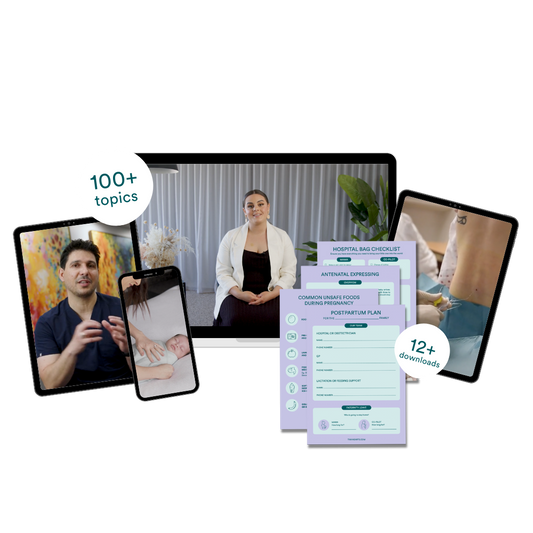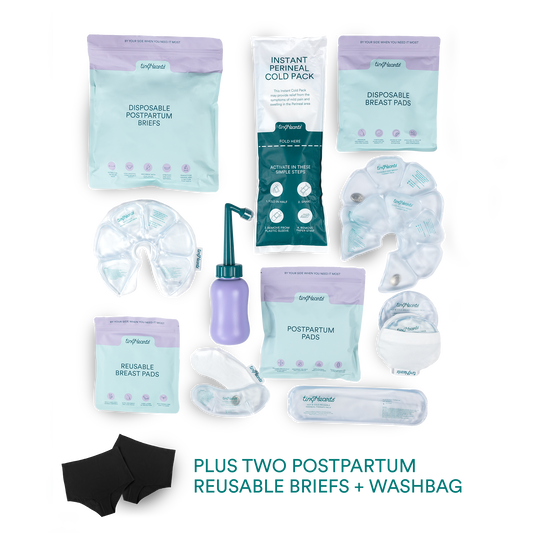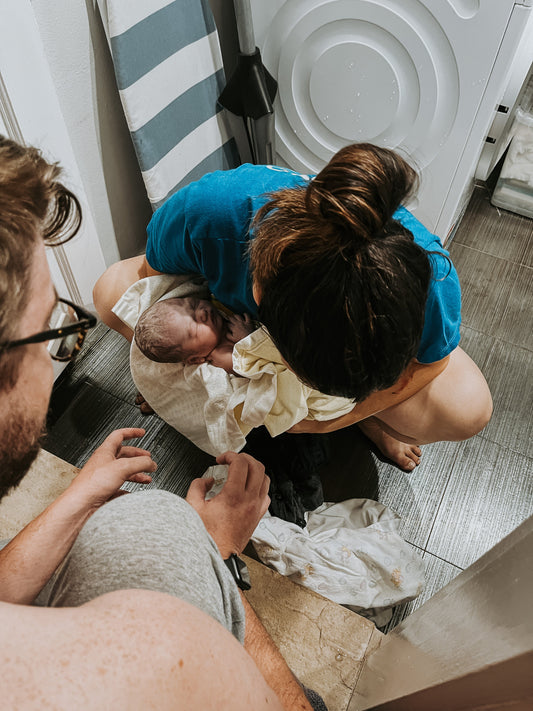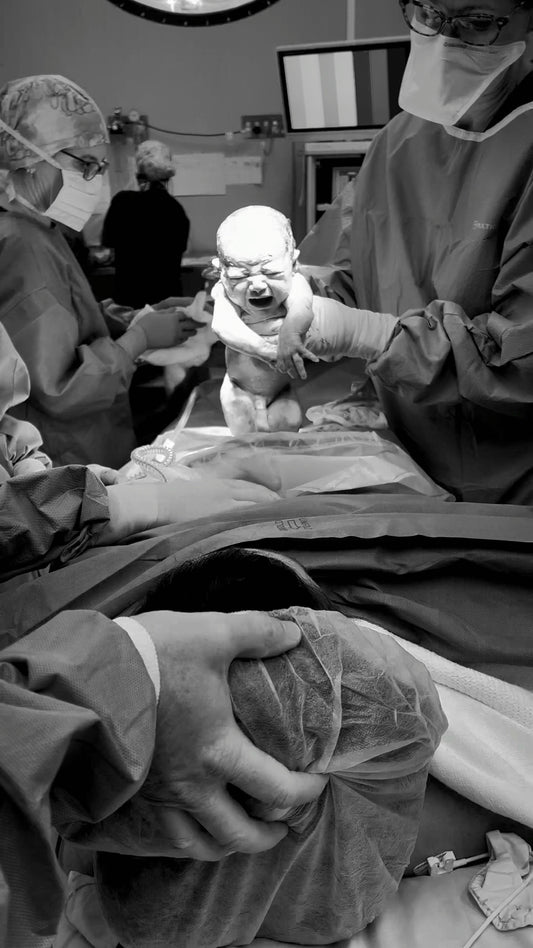
“Are you going to have a birth plan?”
When I was asked this question I knew deep down, setting a plan was never going to be a good idea. I’m a qualified paediatric nurse, so I knew that giving birth usually doesn’t go to plan; so, I planned to deliver my baby in the safest way possible. Little did I know that my delivery would be one of the most traumatic experiences of my life.
In the lead up to my due date, I was feeling great! My pregnancy had progressed as it should - except for fatigue and restless nights, there were no signs of complications. On my due date, I saw the midwife, and she asked how I had been feeling, I generally said good, but I was starting to feel uncomfortable and had noticed I was becoming swollen in my hands and feet. My blood pressure was taken, and they found that I had high blood pressure and that there was protein in my urine.
Panic immediately set in - I was showing all three signs of pre-eclampsia. Despite freaking out on the inside, they placed foetal heart monitor on me, and I called my husband calmly to let him know we had to visit the hospital for extra monitoring. After waiting at the hospital with my husband James for a couple of hours, my blood pressure remained stable, my blood results weren’t overly concerning and the foetal heart rate monitoring was within its normal limits - so we were told to head home and come back the next morning to check on bub again.
Everything the next day went well, and I was starting to feel the panic lift off my shoulders. However, it would seem I became relaxed too quickly. At about 3 am, I woke up suddenly with a throbbing headache - a pain I had never experienced in my life. The hospital told me to come in straight away. My blood pressure had elevated again, and after hours of monitoring, we were told I was to be induced that night. I had heard people say how unpleasant inductions were but I continued to remind myself that I needed to do what was safe for myself and my baby.

After heading home for a brief period, we arrived at the hospital to discuss my induction process with the doctor. They inserted an Atards catheter into my cervix (I had no idea this was even an option for induction), which is a silicon tube that contains a balloon on the end which inflates with saline to apply pressure on your cervix, helping it to both soften and open. This stayed in place for twelve hours.
Over the course of the night, I frequently woke up in pain and was given pain relief when needed. It was a restless night and by 7 am the next day I was feeling exhausted! After twelve hours, the next step in the induction process was to break my waters, so they removed the catheter, and my cervix was measuring at 3cm. The sensation of having my waters broken was strange. It was nothing like the typical movie portrayal of a sudden deluge of fluid - it was much more gradual, and I went to the toilet multiple times because it just felt like I was continually wetting my pants. They then inserted an IV where they applied the syntocinon (a synthetic version of the natural hormone oxytocin which helps to induce labour).
Usually, this drug is meant to be increased in routine stages to help progress the labour but every time the midwife tried to raised the level of hormone, the baby and I would become distressed. It felt like a continuous contraction. After hours of being in intense pain, I was becoming more and more fatigued and was given nitrous gas to help ease the pain. Initially, this was a massive help as I had to focus on my breathing, so it was a welcomed distraction from the pain.
The midwife returned, and it was time to reassess my cervix - I thought surely all of this pain had been worth it. I was bitterly disappointed to learn that my cervix had only dilated by 1cm. My midwife was very supportive and encouraging and set another goal for me to keep going. It was decided that at 6 pm I would be assessed again by a doctor. I was so grateful to have my mum and husband by my side encouraging me along. There were many times when it got overwhelming for my husband to see me so distressed, so having my Mum there meant that he was able to step out of the room every now and again - I was so grateful for their presence.

While I waited eagerly for the 6 pm deadline, I experienced frequent and prolonged contractions. During this time, a new midwife came along and decided to turn up the hormone again to see if we could push the labour along. 6 pm came and went, and my body was struggling, and there was no sign of the doctor. Having worked in the public system for years, I shouldn’t have been shocked by this, but when that doctor walked in an hour later, I broke down. I had never felt this exhausted and in this much pain. I started to sob and beg the doctor to help me I remember distinctly saying “please, please can you help me? I cannot do this, can you please help me? I beg you, please!”
The doctor assessed my cervix, and it was still at 4cm. I felt utterly deflated and defeated all in one exhausted package. At this point, my labour was considered to be a failure to progress, and I was instructed that I would need an emergency caesarian. An Epidural was inserted, and I felt instant relief. I was wheeled into theatre and started to feel intense sharp neck pain and was uncontrollably trembling. I couldn’t get my neck comfortable, and I began to feel very anxious. I was so thankful for my anaesthetist at this point - he was so lovely and calming.
Then my baby was welcomed into the world and it suddenly all felt worth it. My husband burst into tears as he told me we had a little girl.
I briefly had a cuddle before she was whisked away back to the ward. My husband was informed that I’d only be about 20 minutes away as they needed to sew me back up, so off he went with our new bub. Then all of a sudden I had this intense feeling come over me. I experienced a massive wave of nausea and felt as though I was going to pass out. I glanced over at the monitor and noticed that my blood pressure had dropped dramatically. I had haemorrhaged and lost over a litre of blood. This took some time to resolve in theatre and then I experienced a prolonged period of time in recovery as I was still trembling (a common side effect of epidurals). My husband was informed of what had occurred and panic immediately set in.
After an hour, I finally arrived back in the ward and was relieved to see my husband, my parents but most importantly my baby girl. I just sobbed. It was an elated, happy sob and at the same time a cry for what I had just endured. In the end, I had just received the ultimate prize - a healthy baby.
Flash forward three years and my baby girl Maysie is now attending kindergarten. The traumatic birth now seems like a lifetime ago. I’m now challenged by a little “threenager” who is bursting with personality and growing rapidly. Becoming a Mum has been my greatest achievement, and all the bumps along the way have made the journey worth it.









